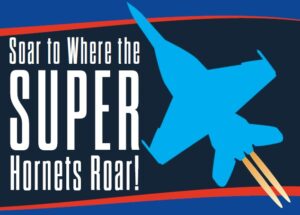4-4-0
TYPE
Boston & Providence Railroad Shops
BUILDER
The "Daniel Nason" is the oldest steam locomotive in the Museum's collection and one of the oldest surviving locomotives in the nation. With a 4-4-0 wheel arrangement, the locomotive is the only surviving "insider," a design popular with railroads before the Civil War, with cylinders and main driving rods between (rather than outside of ) the locomotive side frames. The locomotive had a top speed of 60 mph. Part of the Purdue Collection.
4-8-8-4
TYPE
American Locomotive Company
BUILDER
The "Big Boy" is considered to be the world's largest successful steam locomotive. The locomotive was used to haul the heavy freight trains over the mountains between Cheyenne WY and Ogden UT. The "Big Boy" is an "articulated" engine that is 132 feet 9 1/4 inches long. It weighs 600 tons and could generate a speed of up to 80 mph. The Union Pacific railroad ordered 25 units and, of that number, seven are on static display and one has been restored and is fully operational.
Hear more here.
boxcar, gondola, or flatcar
TYPE
Pressed Steel
BUILDER
Car #'s 370709, 460298, 570329 - Built with European-type couplers and brakes, were used to train soldier railroaders at Weldon Spring, MO; modular cars can be boxcar, gondola, or flatcar.
#370709 - This is a 40 ft. flatcar built in the 1950s. It is convertible and can be turned into a boxcar, gondola, or flatcar.
#460298 - This is a 40ft. gondola built in the 1950s. It is convertible and can be turned into a boxcar, gondola, or flatcar.
#570329 - This is a 40 ft. flatcar built in the 1950s. It is convertible and can be turned into a boxcar, gondola, or flatcar.
Flatcar
TYPE
Major Car Corp.
BUILDER
Heavy-duty flatcar with 6 axles for carrying tanks, other heavy equipment; weighs 35 tons; has 112-ton capacity.
Tank Car
TYPE
Union Tank Car
BUILDER
Built by Union Tank Car Company, this 6,500 gallon petroleum car is an early attempt to build a tank car without a full length under frame. Short frames at each end attached the tank to the wheels and couplers. This style was called "Van Dyke" which is a patented, frameless tank car using the tank with extra stiffening plate on bottom in place of an under frame. This construction of heavy steel plate was to absorb the movement of the train. The stress caused by this movement made the tank flex, loosening the rivets and allowing the contents to leak. This design problem was eliminated by welding on modern cars. It was donated in 1952 by the Union Tank Company.
Flatcar
TYPE
Union Pacific
BUILDER
Has one-piece cast steel body from General Steel Castings; UP class F50-15; 50-ton capacity; last used in maintenance-of-way service.
Three Dome Tank Car
TYPE
Union Tank Car
BUILDER
3-dome (compartment) car with 6,000-gallon capacity for carrying petroleum products; tank-on-frame design was the standard for many years.
Refrigerator Car
TYPE
General American Transportation Co.
BUILDER
This Union Refrigerator Transit Lines URTX # 37144 car was built in 1948 by General American Transportation Co. The 'X" in URTX indicates the car was privately owned while the Milwaukee Road Herald showed it was leased to that railroad. Number 37144 is 40' long & weights 61,500 lbs. The car is a steel bodied reefer with iced bunkers at each end. These ice bunkers hold 10,400 lbs. of chunk ice or 11,500 lbs. of crushed ice. Ice stations were located every 100-150 miles along the railroads main line to replace the melted ice. In the winter, charcoal heaters could be placed in the bunkers to keep the cargo from freezing. Fans are located in the floor at each end to circulate air and keep an even temperature throughout the car. Typical cargo would be fresh fruit, vegetables or eggs. This reefer car was donated in 1975 by the General American Transportation Corporation.
Car #'s 37000, 37095, 37144, 37151, 37439, 37453, 37467, 65104, 67310, 67901, built 1948 - 1954. All steel but still ice-cooled.
Rail Car "Piggyback"
TYPE
United American
BUILDER
This "Front Runner" piggyback car was designed to carry truck trailers. It has four wheels instead of a pair 0f two-axle trucks, 28-inch diameter wheels rather than 33-inch diameter wheels which were standard on most freight cars. It did not have a continuous floor so it could not accommodate containers nor could a trailer be towed aboard by a tractor. The trailer could only be loaded by an overhead crane. The car is 53'10" in length, weighs 25,500 pounds empty, and has a capacity of 65,000 pounds.
Caboose
TYPE
Northern Pacific Railway
BUILDER
Built in Brainerd, Minnesota, by the Northern Pacific Railway, this all-steel caboose spent its career serving the Spokane, Portland & Seattle Railway (SP&S). The SP&S was jointly owned by the Northern Pacific and Great Northern Railways. When these railways merged with the Burlington Northern line, this caboose was renumbered BN 11436.








